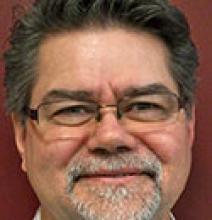When I was a child, my mother used to bake buns every Saturday. It seemed to me that she would make hundreds of them. She baked so that on Sunday we could have faspa. There was something sacred about faspa. Something about that light meal contributed to my concept of sabbath. In my mind, I made a connection to the divine when I smelled fresh baking.
Jesus knew the power of taking something ordinary and infusing it with rich theological significance. When he said, “I am the bread of life,” I got it immediately. I thought I understood the holiness of that statement. The significance of taking many individual grains, crushing them together to create a new substance that could be used to feed a hungry world, was not lost on me. A metaphor rich with meaning, and yet for me it was limited to my memories of bread, my understanding of what flour should be and my experience of holy food.
I knew the beauty of bread made from crushed grains of wheat and now that bread makes me ill. Several years ago, I was diagnosed with celiac disease and now my body reacts badly to even small amounts of gluten. I no longer can eat bread made from wheat and I am still disappointed at this reality every time I walk past Tall Grass Prairie Bread. My life seems incomplete without it. Yet I cannot eat it anymore.
Reflecting on my changing relationship with wheat reminds me to continue to go deeper into the meaning of Jesus’ words: “I am the bread of life.” I was so sure I knew what bread looked like. Now that look is much richer, much more varied and complex. Flour blends of beans, potatoes, corn, rice and nuts now compose the bread I eat. Communion bread, now generously made without wheat so that I can share the holy meal with my community, still represents the body of Christ—maybe more like the body of Christ than ever before.
In this Advent season, a time rich with signs, words and symbols, I pray that together we will grant one another the grace to continue to explore the meaning of this holy time in the church year, creatively deepening our understanding of faith by allowing the Holy Spirit to breathe new meaning into the symbols we hold dear.
Ken Warkentin is executive director of Mennonite Church Manitoba.
—Posted Dec. 10, 2014



Add new comment
Canadian Mennonite invites comments and encourages constructive discussion about our content. Actual full names (first and last) are required. Comments are moderated and may be edited. They will not appear online until approved and will be posted during business hours. Some comments may be reproduced in print.